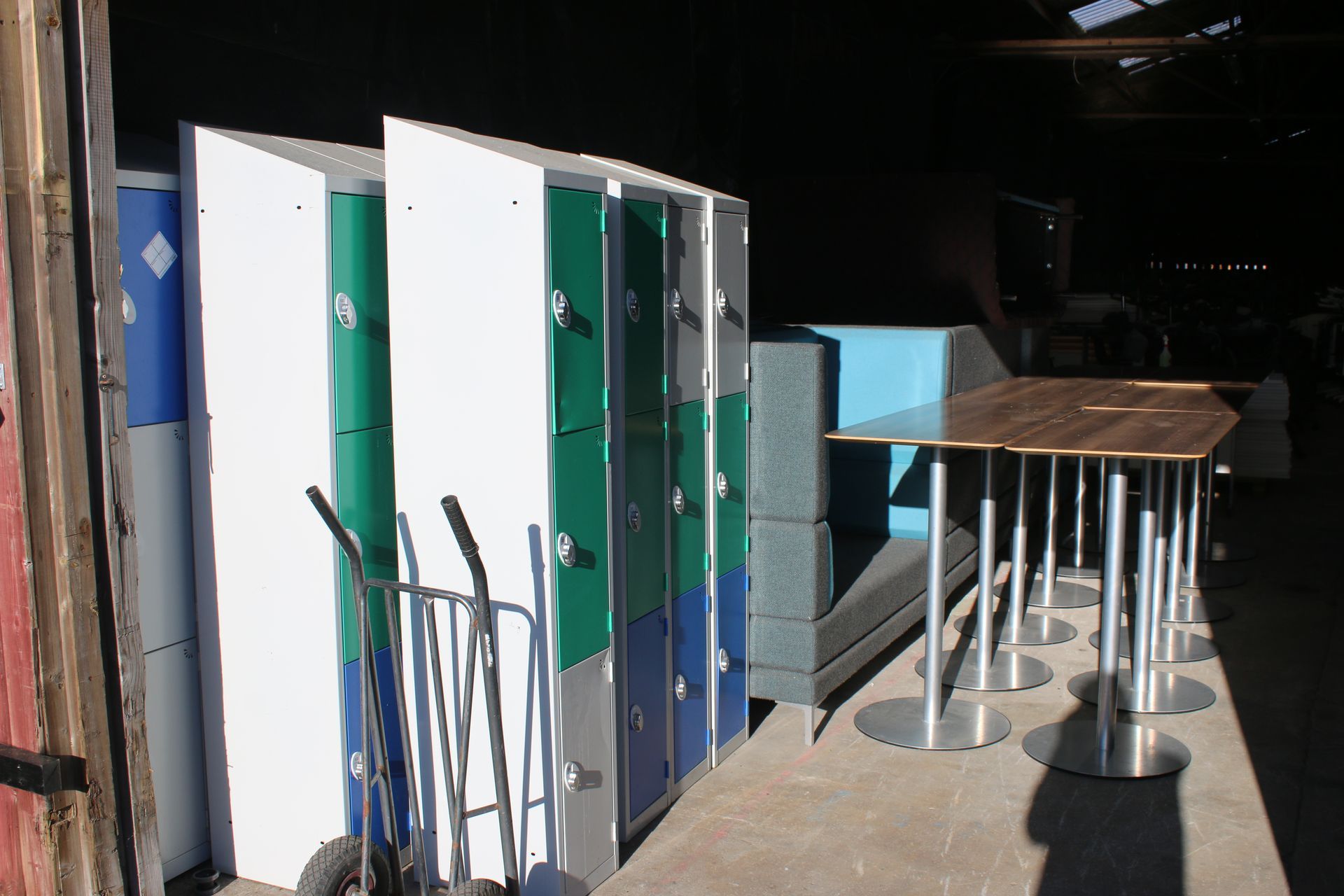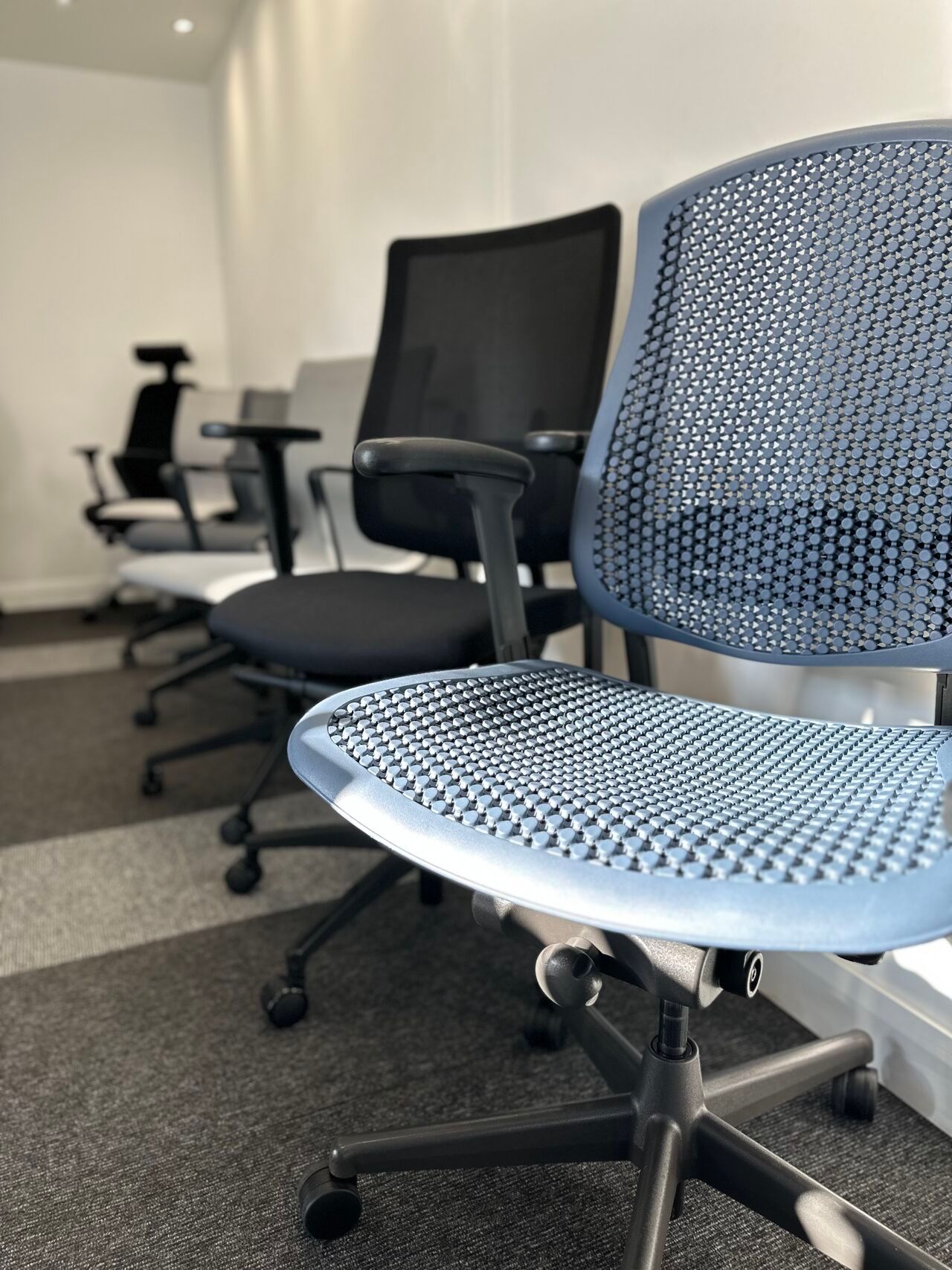The Ultimate Guide to Buying Second-Hand Office Furniture: Save Money and Boost Sustainability
Are you looking to furnish your office space without breaking the bank or sacrificing your commitment to sustainability? Look no further than second-hand office furniture. In this ultimate guide, we will walk you through the process of buying second-hand office furniture, offering practical tips to save money while reducing your environmental impact.
Buying second-hand furniture not only helps you cut costs significantly but also allows you to contribute to a circular economy by giving pre-owned items a new lease on life. Whether you need desks, chairs, file cabinets, or storage units, the second-hand market has a wide variety of options to fit your needs and budget.
In this comprehensive guide, we will cover everything from where to find the best deals on second-hand office furniture to how to assess quality and functionality. We will also explore important factors to consider when choosing second-hand items, such as ergonomics, style, and compatibility with your existing office decor.
So, get ready to make savvy purchase decisions that align with your financial goals and commitment to sustainability. Let's dive into the world of second-hand office furniture and discover how you can save money while boosting your impact on the environment.
Why choose second-hand office furniture?
There are many reasons why choosing second-hand office furniture is a smart choice. Firstly, it helps you cut costs significantly. New office furniture can be expensive, and if you're working with a limited budget, buying second-hand could save you a substantial amount of money. You could end up with high-quality furniture at a fraction of the cost of buying new.
Secondly, buying second-hand office furniture is an excellent way to promote sustainability and reduce your environmental impact. When you buy used furniture, you're giving it a new lease on life, which means it won't end up in a landfill. This is an important step towards reducing waste and conserving natural resources.
Finally, buying second-hand furniture is a smart way to support the circular economy. Rather than buying new furniture that requires the use of raw materials and energy to produce, you're supporting a system where products are reused and repurposed, reducing the need for new production.
Benefits of buying second-hand office furniture
The benefits of buying second-hand office furniture are numerous. Here are some of the key advantages:
- Cost-effective: The most obvious benefit of buying second-hand office furniture is that it saves you money. You can often find high-quality items at a fraction of the cost of buying new.
- Eco-friendly: Buying second-hand furniture is an eco-friendly choice. It reduces waste, conserves natural resources, and supports the circular economy.
- Unique: Second-hand furniture can be unique and one-of-a-kind, which can add character and personality to your office space.
- Quality: Second-hand furniture is often made of high-quality materials that have stood the test of time. This means that you can get sturdy and durable furniture that will last for years.
- Instant availability: When you buy second-hand furniture, it's often available immediately. You don't have to wait for weeks or months for delivery, which can be particularly useful if you need to furnish your office space quickly.
Factors to consider when buying second-hand office furniture
Before you start shopping for second-hand office furniture, there are several factors to consider to ensure that you make the right purchase:
- Ergonomics: It's important to choose furniture that is ergonomic and comfortable. Look for chairs and desks that provide proper support for your back, neck, and arms.
- Style: Consider the style of the furniture and how it fits with your office decor. You want to choose something that complements your existing furniture and enhances the overall look of your office space.
- Functionality: Think about the functionality of the furniture and how it will be used. Will it fit in your space? Does it have enough storage? Will it be easy to maintain and clean?
- Compatibility: Consider the compatibility of the furniture with your existing office equipment. Will it work well with your computer, printer, and other devices?
- Condition: Assess the condition of the furniture carefully. Look for any damage or wear and tear that may affect its function or appearance.
Where to find second-hand office furniture
Now that you know why buying second-hand office furniture is a good idea and what to consider when making a purchase, let's talk about where to find it. Here are some of the best places to look:
- Online marketplaces: Websites like eBay and Facebook Marketplace are excellent places to find second-hand office furniture. You can often find a wide variety of items at competitive prices.
- Thrift stores: Thrift stores often have a good selection of second-hand furniture, including office furniture. You can also find unique and quirky items that you may not find elsewhere.
- Used office furniture resellers : These resellers specialise in buying and selling used office furniture. They often have a large inventory and can offer competitive prices and product guarantees.
- Auctions: Auctions can be a great way to find high-quality second-hand office furniture at affordable prices. You can often find items that are in excellent condition and have been well-maintained.
Evaluating the condition of second-hand office furniture
When buying second-hand office furniture, it's important to evaluate the condition of the items carefully. Here are some things to look for:
- Wear and tear: Check for any signs of wear and tear, such as scratches, dents, or stains. These can affect the appearance and functionality of the furniture.
- Functionality: Test the functionality of the furniture. Sit in chairs, open drawers, and check for any signs of damage or malfunction.
- Sturdiness: Make sure that the furniture is sturdy and stable. Check for any wobbling or unevenness.
- Cleanliness: Look for any signs of dirt or grime. You want to choose furniture that is easy to clean and maintain.
Negotiating the price of second-hand office furniture
When buying second-hand office furniture, it's always a good idea to negotiate the price. Here are some tips for successful negotiation:
- Do your research: Research the market value of the furniture you want to buy. This will give you an idea of what a fair price is.
- Be polite and respectful: When negotiating, be polite and respectful. Don't try to haggle too aggressively, as this can put off the seller.
- Point out any defects: If you notice any defects or damage, point them out to the seller. This can give you some leverage when negotiating the price.
- Offer to pay in cash: Sellers may be more willing to negotiate if you offer to pay in cash. This saves them the hassle of dealing with credit card transactions.
Tips for selecting the right second-hand office furniture
Here are some additional tips to help you select the right second-hand office furniture:
- Measure your space: Before you start shopping, make sure you measure your office space. This will help you choose furniture that fits well and doesn't overcrowd your space.
- Test it out: Whenever possible, test out the furniture before you buy it. Sit in the chairs, open the drawers, and make sure everything works properly.
- Look for quality: Look for high-quality furniture that will last for years. This means choosing items made of sturdy materials that have been well-maintained.
- Consider refurbishing: If you find a piece of furniture that you love but it needs some work, consider refurbishing it. This can be a cost-effective way to get a unique and high-quality piece of furniture.
Cleaning and refurbishing second-hand office furniture
Once you've purchased your second-hand office furniture, it's important to clean and refurbish it properly. Here are some tips:
- Clean thoroughly: Clean the furniture thoroughly with soap and water or a specialised cleaning product. This will help remove any dirt or grime and make it look new again.
- Refinish or repaint: If the furniture needs some work, consider refinishing or repainting it. This can give it a new lease on life and make it look as good as new.
- Replace any damaged parts: If any parts are damaged or broken, replace them. This will ensure that the furniture is functional and safe to use.
Sustainable practices in second-hand office furniture
Buying second-hand office furniture is a sustainable choice, but there are other practices you can adopt to make your office even more eco-friendly.
Here are some ideas:
- Buy refurbished or remanufactured: Consider buying refurbished or remanufactured office furniture. This is furniture that has been restored to like-new condition and can be a cost-effective and sustainable option.
- Donate or recycle: When you no longer need your second-hand furniture, consider donating it to a charity or recycling it. This will ensure that it doesn't end up in a landfill and can be reused or repurposed.
- Choose sustainable materials: When buying new furniture, choose sustainable materials like bamboo, reclaimed wood, or recycled plastic. This reduces the need for new production and conserves natural resources.
In conclusion, buying second-hand office furniture is a smart choice for anyone looking to save money and reduce their environmental impact. By choosing second-hand, you can get high-quality furniture at a fraction of the cost of buying new. You'll also be contributing to a circular economy and reducing waste.
When shopping for second-hand office furniture, consider factors like ergonomics, style, and functionality. Evaluate the condition of the items carefully and negotiate the price when possible. And once you've purchased your furniture, clean and refurbish it properly to ensure that it lasts for years.
By embracing the benefits of second-hand office furniture, you can create a stylish and functional office space while making a positive impact on the environment. So why not give it a try? Start shopping for second-hand furniture today and enjoy the benefits of a sustainable and cost-effective office space.
Did you find this article interesting? Continue that interest and contact us today to learn more.









